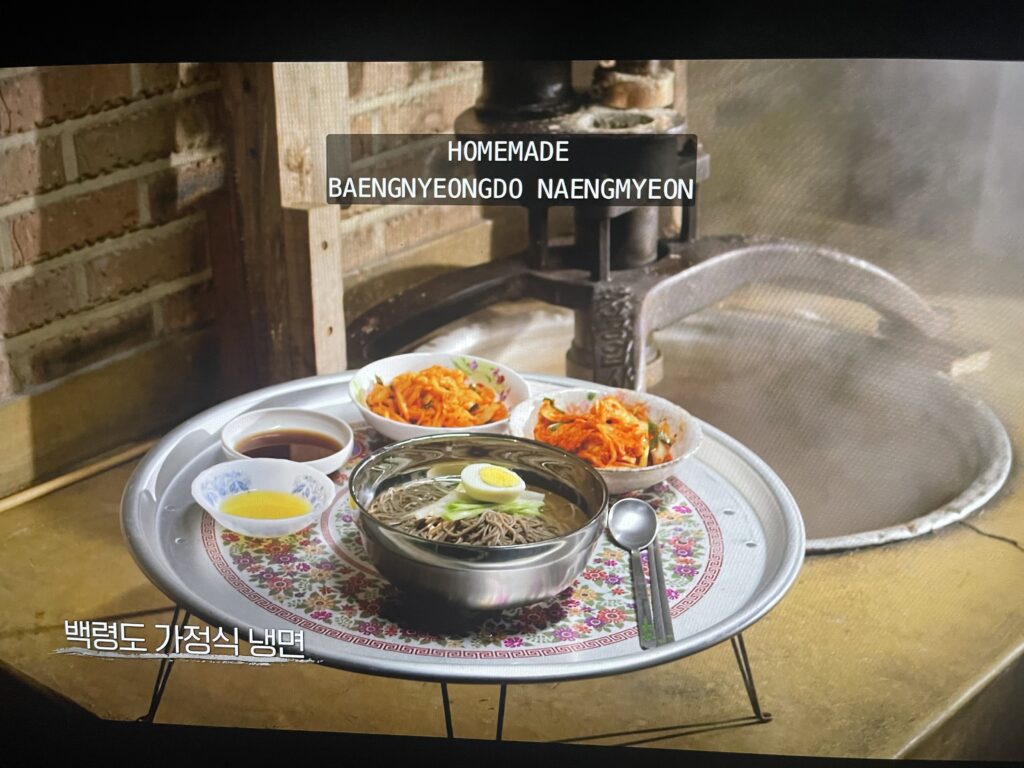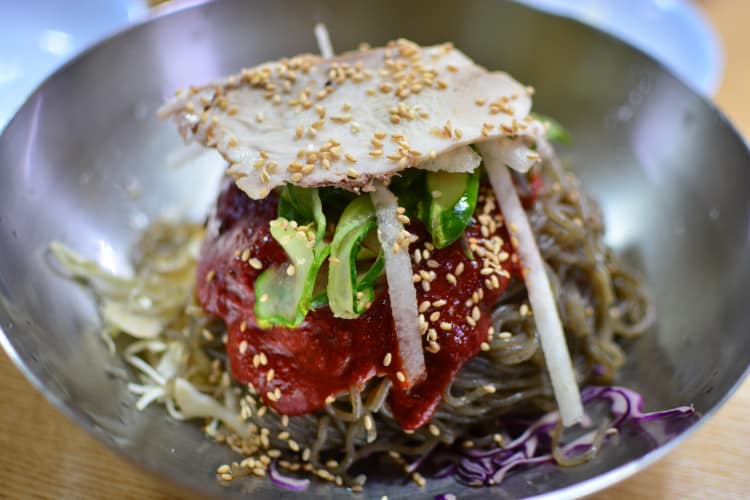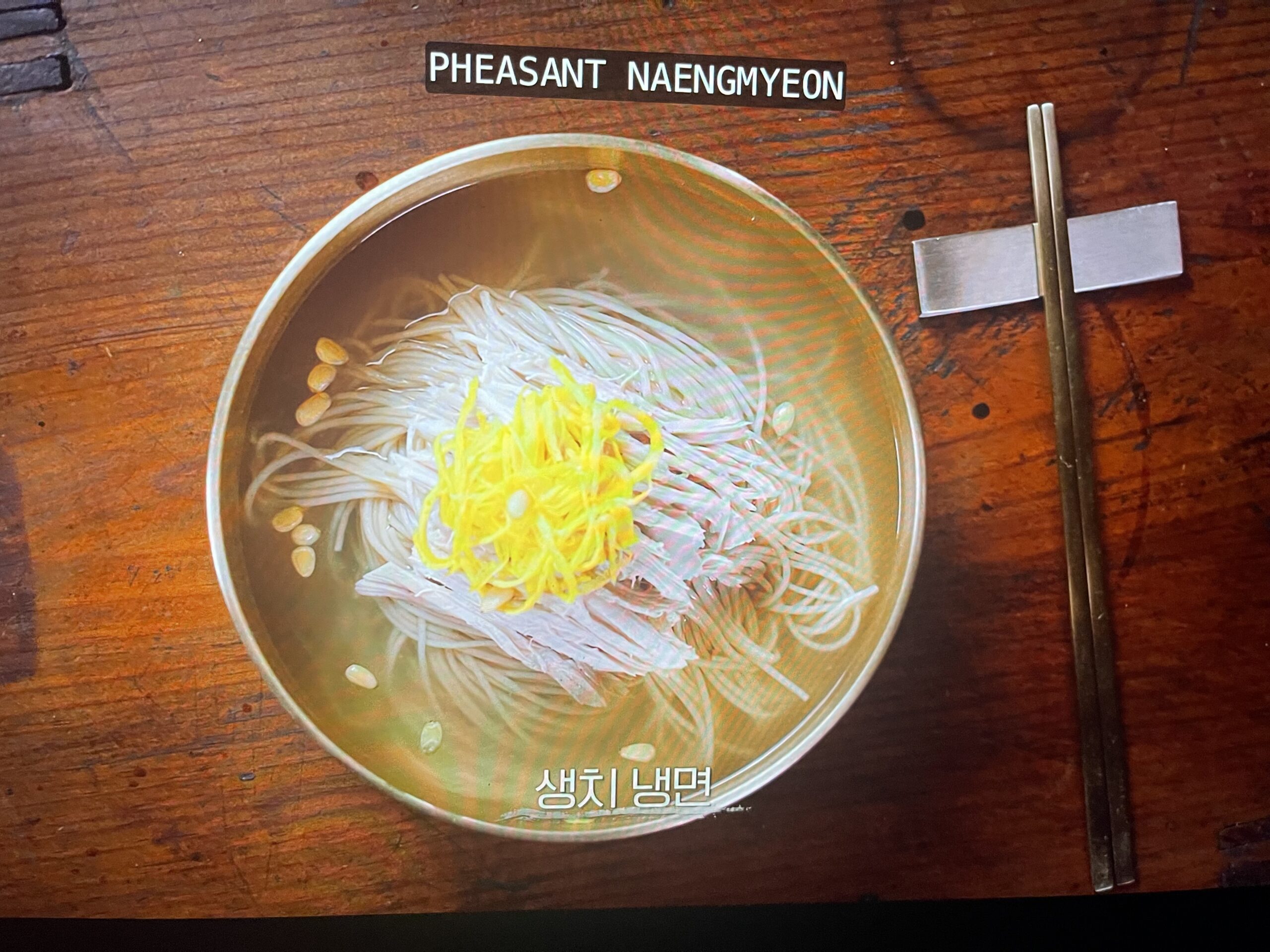The two-part Netflix documentary series, Korean Cold Noodle Rhapsody, explores the nuances of one of Korea’s most beloved and seemingly simple dishes: naengmyeon. Hosted by South Korean chef and food researcher Paik Jong-Won, the series is a follow-up to 2020’s Korean Pork Belly Rhapsody, which was also a great show.
Korean cold noodles, naengmyeon, are Korea’s counterpart to Japanese soba. The Netflix show feature some two hours of the history and how-to of makin naengmyeon is entertaining. Naengmyeon translates to cold noodles and and is a favorite summer dish of cold, long and thin handmade noodles made from the flour and starch of various ingredients, including buckwheat (메밀, memil), potatoes, sweet potatoes, arrowroot starch (darker color and chewier than buckwheat noodles), and kudzu (칡, chik). Buckwheat is probably the most common. And, it’s interesting to note that that buckwheat is not actually wheat but rather is more closely related to sorrel – which is a grass, but since it has to be hulled or chaffed, that is probably where the name comes from. There are other buckwheat noodles as well, just to make things more confusing in Korean cooking. http://mykoreaneats.com/2019/08/02/15151/ explains the other main buckwheat noodle, memil makguksu, together with the other types.
Naengmyeon is typically served in a large stainless-steel bowl with a tangy iced broth, julienned cucumbers, slices of Korean pear, thin, wide strips of lightly pickled radish, and either a boiled egg or slices of cold boiled beef or both. There is another version, bibim, which is like bibimbob, but cold instead of hot and with noodles instead of rice.
Spicy mustard sauce or mustard oil, and vinegar are often added before consumption. Some provinces use a fish sauce made from small anchovies in place of soy sauce as a seasoning. Traditionally, the long noodles would be eaten without cutting, as they symbolized longevity of life and good health, but servers at modern Korean restaurants usually ask if the noodles should be cut prior to eating, and use scissors to cut the noodles.
The two main varieties of naengmyeon are mul naengmyeon (물 냉면) and bibim naengmyeon (비빔 냉면). The former is served as a cold soup with the noodles contained in broth made from beef, chicken or dongchimi. Mul naengmyeon originates from Pyongyang. Pyŏngyang naengmyŏn is mainly made from buckwheat and beef broth or pheasant broth. It also uses dongchimi broth or a mixture of it, while adding the sliced pieces of the radish to the dish. Vinegar, mustard oil (provided on request at most restaurants), and sugar is added according to taste before eating. South Koreans do not add sugar and use beef broth exclusively. Both versions are easy to make:
https://www.foodnetwork.com/recipes/food-network-kitchen/mul-naengmyeon-11109424
https://www.foodnetwork.com/recipes/food-network-kitchen/bibim-naengmyeon-10086609



